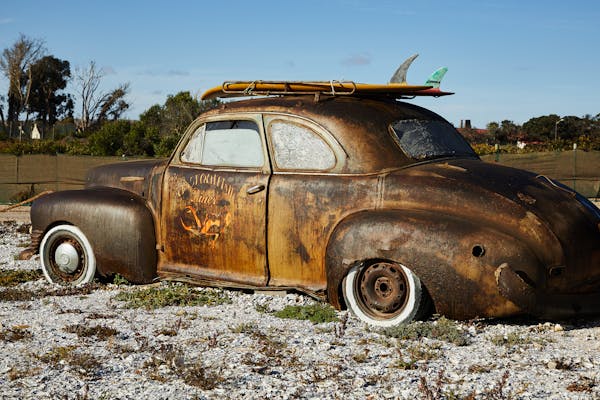Amidst the bustling industries and ever-growing urban landscapes, there is a silent champion contributing to both economic vitality and environmental sustainability: scrap steel. Australia, like many industrialised nations, has seen a shift towards a circular economy, and steel plays a pivotal role. But what is the value of scrap steel prices in this transformative move? In this exploration, we unearth the economic significances of scrap steel recycling and its substantial impact on the industry.
Understanding the Circular Economy and Scrap Steel
A circular economy is a systematic approach to economic development designed to benefit businesses, society, and the environment. In contrast to the ‘take-make-waste’ linear model, a circular economy aims to redefine growth, focusing on positive society-wide benefits. It entails gradually decoupling economic activity from the consumption of finite resources and designing waste out of the system.
Scrap steel sits at the heart of this movement. As a staple of the construction, manufacturing, and automotive sectors, steel is deeply integrated into our daily lives. However, its enduring value comes from its ability to be recycled indefinitely without degradation of its properties—an emblematic example of a circular economy material.
The Economic Impact of Scrap Steel Recycling
Recycling scrap steel has far-reaching economic implications. It significantly reduces the need for mining raw materials, which consequently diminishes environmental impact, energy use, and costs associated with steel production. In the Australian context, steel recyclers serve as the pivotal nexus between waste and new material creation.
The price of scrap metal directly influences numerous market segments. When scrap steel prices are favourable, there’s an impetus for collectors and businesses to sell off their metal waste, which steel manufacturers can then reprocess into new products. This dynamic creates a robust supply chain that bolsters entire economic sectors.
Scrap Steel’s Role in Job Creation and Innovation
Recycling scrap isn’t just about reusing materials; it’s also about job creation. The process of collecting, sorting, and reprocessing scrap steel requires skilled labour. From logistical experts to machine operators and metallurgists, the industry supports an expansive workforce.
Moreover, it encourages innovation. Adapting to fluctuating scrap steel prices demands agility and creativity from businesses. This environment nurtures technological advancements in scrap processing and material efficiency, further solidifying steel’s status as a crucial economic pillar.
Challenges in the Scrap Steel Industry
The journey towards maximising the value of scrap steel isn’t without its challenges. Issues such as contamination of scrap, fluctuating market demands, and the need for global trade policies that support the circular economy can create barriers to optimising steel recycling practices.
Yet, even with these challenges, the Australian steel industry remains resilient, fostering continuous improvements in both techniques and policies to advance steel recycling.
Consumer Participation in Steel Recycling
Understanding the value of scrap steel is not solely the domain of industry professionals. Consumer participation plays a critical role in contributing to a seamless steel recycling process. When individuals and companies utilise a steel recycling bin, they’re making a conscious decision to support sustainable practices.
By engaging communities and corporations in the process, the availability of recyclable steel sees an uptick, easing supply concerns and ensuring that the economic benefits of steel recycling are realized.
The Ripple Effect of Scrap Steel on the Global Economy
The influence of scrap steel recycling extends beyond local economies. Internationally, it helps balance trade deficits by transforming waste into exportable commodities. Additionally, as more countries embrace steel recycling, global manufacturing costs can decrease, due to the reduced need for raw materials extraction.
This global perspective highlights scrap steel’s versatility and expansive economic influence, showing how a simple steel recycling bin can contribute to large-scale economic benefits.
Looking to the Future: Steel Recycling as an Economic Cornerstone
The future of the world’s economy hinges on sustainable practices, and scrap steel recycling is set to play a starring role. As technology progresses and new policies emerge to support a circular economy, the value of scrap steel is likely to increase even further.
Now is an opportune time for businesses, consumers, and policymakers to commit to steel recycling practices. The monetary and environmental advantages it offers are a gateway to a more sustainable and prosperous future.
Fostering the Growth of Scrap Steel Markets
Consistent demand for recycled steel encourages the growth of related markets. Investments in recycling infrastructure, such as more sophisticated steel recycling bins, can facilitate greater efficiency in material recovery.
Stakeholders across the board, from government bodies to private investors, have a golden opportunity to enhance the economics of scrap steel. Their contributions can forge a path to a greener and more robust industrial landscape.
In Conclusion: The Transcendent Value of Scrap Steel
Scrap steel is more than waste; it’s a latent resource brimming with potential to drive economic growth, bolster job markets, and support global sustainability efforts. With the rise in awareness of scrap steel prices, the market is ripe for expansion.
Understanding and embracing steel’s role in a circular economy allows us to see the metal wealth in waste. It invites industries, communities, and individuals alike to play an active role in shaping a more sustainable economic reality. As we navigate the complexities of the global market, scrap steel stands out as a testament to what can be achieved when we commit to circular economic principles.
